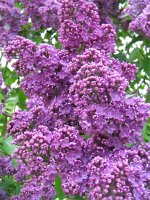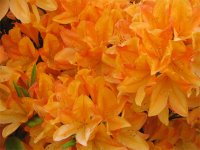
 Kew Gardens has changed a lot in just a week. The lilacs are now in full bloom, with a very heavy perfume lingering around the lilac beds. The azaleas are also about two thirds out with most of the blossoms in prime condition.
Kew Gardens has changed a lot in just a week. The lilacs are now in full bloom, with a very heavy perfume lingering around the lilac beds. The azaleas are also about two thirds out with most of the blossoms in prime condition.However I chose to do my sketching in Nosegay garden at the rear of Kew Palace where the colour is a little less 'full on' - apart from the laburnum pergola! I was limited for views by where I could sit. My "blogger's bottom" (see Walk and Sketch Blogs) got a lot of exercise yesterday - but also had a bit of a challenge as I sketched sitting on the stone steps due to the lack of seating in the Nosegay Garden.
There were any number of views that I could have done yesterday if I'd had a folding seat with me. I was asked to speak to people from the Gardens yesterday after I commented to the exhibition people about the poor signposting of "Artists's Kew". One of the comments I made was that I thought the gardens could be a lot friendlier to artists and maybe encourage more regular painting of the gardens through the provision of easels and folding seats to hire and maybe arrange or encourage plein air events / sketchcrawls for artists and an annual exhibition of paintings done within or of the Gardens. We'll see if anything happens!
This sketch of the mulberry tree in the Nosegay Garden is coloured pencil on a double page spread of my Moleskine sketchbook. Chromium oxide green was added when I got home - and I must make sure that gets included in my sketching pencil case in future!
 The Nosegay Garden is part of the Queen's Garden. The Kew Gardens website says
The Nosegay Garden is part of the Queen's Garden. The Kew Gardens website says The plants in the Queen's Garden are those exclusively grown before the seventeenth century. The plants grown were considered primarily for their medicinal qualities, with their culinary and ornamental qualities as secondary and tertiary considerations. Research into the plants was mostly taken from the seventeenth century herbals, from authors such as John Gerard, John Tradescant and John Parkinson.and
The labelling system in the Queen's Garden is differentSome of the 'virtue or quotation's were very amusing! And some of the plants were very unusual - such as the Great White Sea Daffodil, the juice of which apparently can have a mortal impact!
to that of the rest of the gardens. The following information is included:
• contemporary botanical name and family;
• common name in the seventeenth century;
• virtue or quotation from a herbal; and
• author's name and date of publication.
I'm anticipating going back and to Kew a lot over the course of the year so I'm creating a Kew section in the column on the right for relevant posts and links.
Technorati tags: art , drawing , coloured pencils , Kew Gardens , moleskine , pencil , plein air , sketching , sketchbook
I love the composition of this one - good for you speaking up about artists' needs.
ReplyDeleteI hope they take notice of your comments. They used to provide folding seats for free at the Natural History Museum, I don't know if they still do. I've resisted the temptation so far to buy a folding seat, because if my walking and drawing kit gets too big and heavy I'll give up.
ReplyDelete